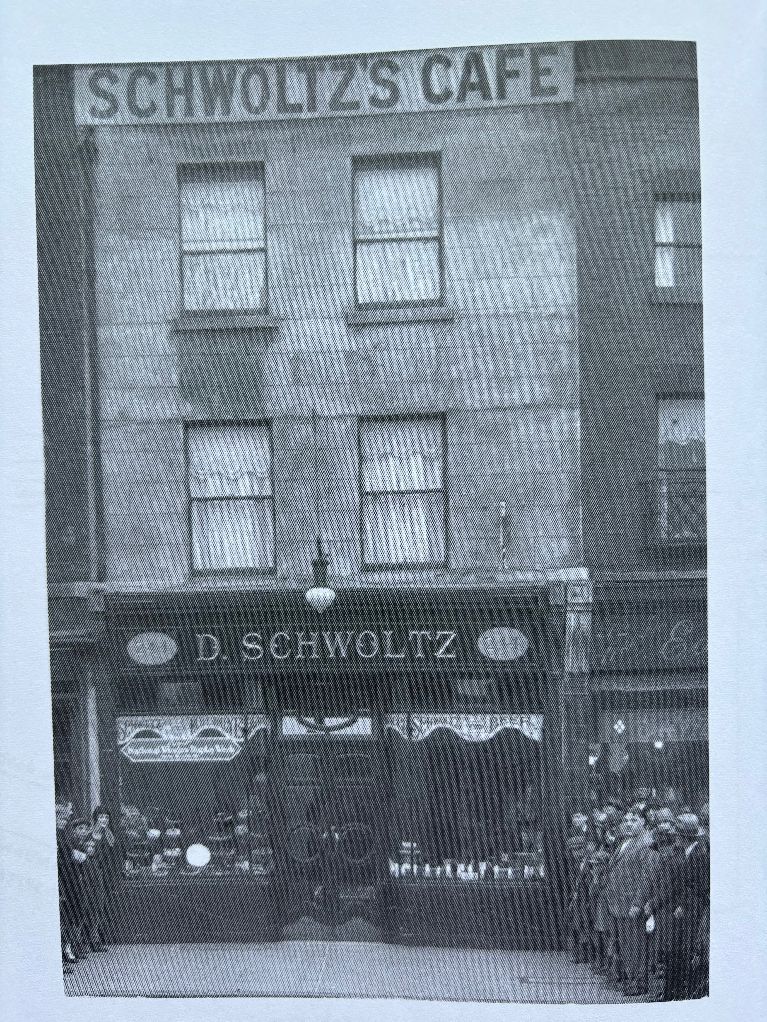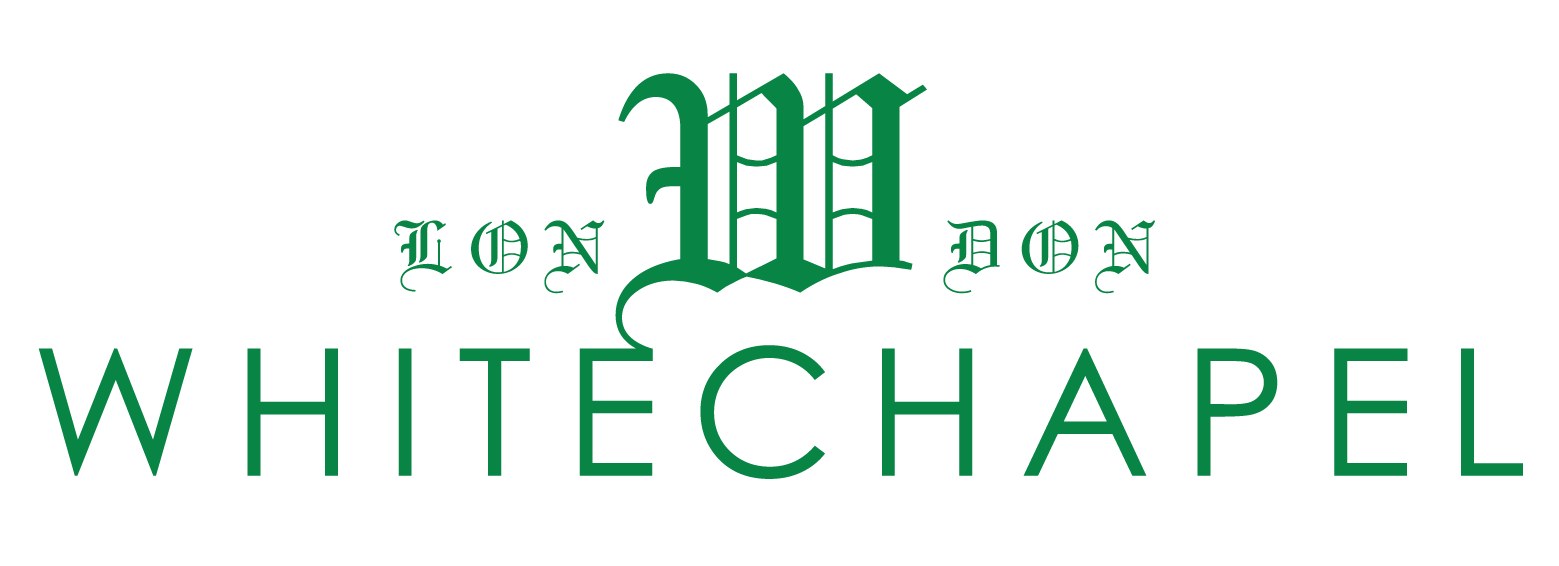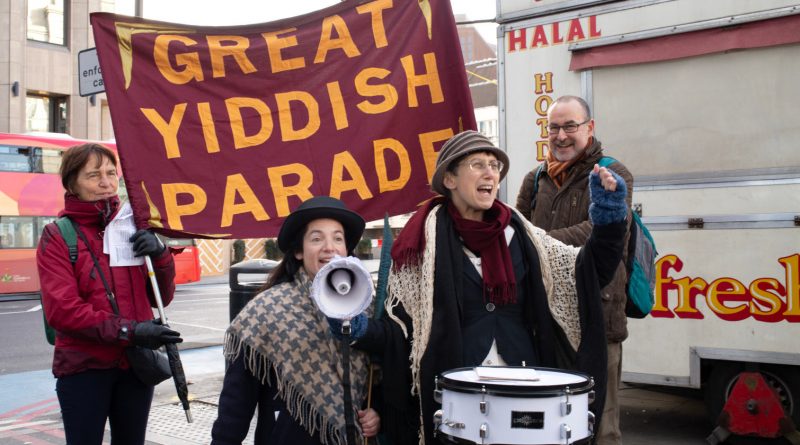On loss and incomplete retrieval: the Jewish East End with Nadia Valman
‘I think my interest in the East End is partly about having not asked my grandmother enough questions about her life here’: Professor Nadia Valman on remembering and misremembering the Jewish East End.
You may think that the Jewish East End is a bygone era, one that vanished over a century ago leaving barely any traces behind, and you’d be largely correct.
In the late 19th century, millions of Jews emigrated from Eastern Europe to Western Europe and America to escape antisemitic persecution. During this time, Spitalfields and Whitechapel became a vibrant hub of Jewish economic and cultural life. Over 100 synagogues were established in the area, and Yiddish – a fusion of German and Hebrew that was the language of the eastern European Jewry – abounded in the streets, theatres, and newspapers.
By the early 20th century, the Jews had begun moving away to the more prosperous areas of north and east London, leaving the East End behind. The synagogues, market stalls, and businesses Jews had once presided over were repurposed by subsequent migrant communities, and The Blitz all but ravaged the remaining vestiges of a Jewish past.
Today, the busy streets of Whitechapel and Spitalfields don’t readily yield to someone eager to excavate their Jewish heritage. But for Professor Nadia Valman, the past’s apparent disappearance is the source of its enduring power.
Valman is a Professor of Urban Literature at Queen Mary University of London and is an expert on British Jewish literature. As well as having published work on writers of the Jewish East End like Israel Zangwill and Arthur Morrison, Valman leads walking tours of the district for the Migration Museum and has developed walking tour apps for the Jewish Museum.
As a professor in Mile End, Valman works within walking distance of Wentworth Street, the location of the historic Petticoat Lane Market that was once the hub of Jewish cultural and commercial life in the 1890s. She said:
‘I grew up with tales of the East End from my grandmother, and when I was a child I just passively took them all in, as you do as a child without ever really asking questions.
‘When I came to Queen Mary, I started to walk around the streets and I realised that I was working within a minute of where my great-grandfather had his salt beef cafe. I wanted to know more and more about his place, and I regretted so much that I hadn’t asked my grandmother more.
‘I think my interest in the East End is partly about having not asked my grandmother enough questions about her life here. I think that that’s the experience of many of us, that we don’t ask our grandparents the things that we come later to be completely fascinated by.’
Valman’s great-grandfather David Schwoltz was born around 1880 in Kremenchuk, and immigrated to London in 1900. From 1922, he ran Schwoltz’s Cafe at 244 Mile End Road with his wife Dora Schwoltz, and then with his daughter Ray. The cafe, which specialised in takeaway hot salt beef sandwiches, was run by the family until around 1950 and remained on Mile End Road until the parade of shops was demolished for housing in the mid-1970s.

The irretrievable Jewish East End is no doubt a space of mourning, but the vanished past also poses a tantalising question mark to those pondering it in the present. For Valman in particular, feelings of loss can be productive, triggering the imaginative and recuperative work of memory.
‘That impetus to learn often comes out of a sense of, actually, you know you’ll never be able to recover all that you want to, and so you just keep trying and trying by different means to do that.’
While traces of Jewish life in the East End might seem few and far between, Valman has dedicated her career to bringing these buried vestiges to the surface. For Valman, one of the most interesting sites of Jewish history in Tower Hamlets is the Gurdwara Sikh Sangat on Harley Grove off Bow Road.
‘[It’s] a beautiful small classical building, which is a Sikh temple now, and before that it was the Bow Synagogue and my grandparents were married there.
‘But you’d never know, it’s not got a blue plaque on it, it’s not got anything telling you that, so to me, that’s a really great example of how the East End is full of these places whose history you know must be more than the surface you can see.
‘It’s also a really good example of the many buildings in the East End that continue to be used for the same purpose by a new community.’
In 2017, Valman organised ‘The Great Yiddish Parade’ through the streets of Whitechapel in a theatrical reenactment of a protest by Jewish workers in 1889. Alongside Yiddish historian Dr Vivi Lachs, Valman led a crowd of 50 people towards Mile End, who marched to the rhythm of Yiddish singers and klezmer musicians. Valman said:
‘The Great Yiddish Parade that we first did in 2017 was a reenactment of a particular protest which was a protest by Jewish Yiddish-speaking tailors who were protesting against their own employers who were also Jews. They were singing protest songs and making speeches in Yiddish, so it was an intracommunal protest.
‘Their march was actually to the Great Synagogue in Aldgate which is where the Chief Rabbi was in charge. And they were calling on him to denounce the practice of sweating, of exploitative employment in garment workshops.’
In Valman’s recreation of the march, crowds were equipped with Yiddish-language song sheets and sang the lyrics to Di Tsukunft and Di Shvue, the anthem of the socialist General Jewish Labour Bund in the early 1900s. The streets burst with music from the klezmer band Katsha’nes and protest speeches from 1889, bringing to life a censored Yiddish culture that has been largely forgotten.
Through reenacting the march in the 21st century, Valman isn’t encouraging us to dwell in nostalgia for a vanished past. Instead, she is highlighting the ongoing legacy of public protest in the East End, a tradition that binds the present moment to Victorian London.
‘We certainly wanted to enable people to understand that the experience of marching together is collective and motivating, it feels as if something is being done by people doing it together. That was the first moment in London and in the East End when people realised that collective action makes something happen.
‘And since then, London has erupted more and more with street protests and with marching and no one needs to be told that it’s a very affirming activity to march with others, to sing with others. Even if you feel that your cause is not being listened to, it’s really important to feel that solidarity with others and it enables you to look forward purposefully and optimistically.’
Valman has published work exploring how Jewish writers such as Alexander Baron and Arnold Wesker have remembered Spitalfields and Whitechapel from a post-war perspective. Looking back at the unrecognisable streets of their childhood, the writers blend memory with make-believe, creating a collective mythology of the East End.
While Wesker’s play Chicken Soup with Barley (1956) looks back at the East End with a nostalgic romanticism, constructing it as a cradle of anti-fascist revolutionary fervour, Baron’s novel The Lowlife (1963) depicts London as a ruinous city of bombsites, haunted by distant memories of pre-war immigrant life and the traumatic loss of The Holocaust.
While there isn’t a record of Jewish women writing about the East End during the post-war period, Valman insists that we remember the enormous contribution of Jewish women to the history of political activism in London. She said:
‘There were certainly lots of politically active Jewish women going back to the Suffragettes, and there were Jewish women who were absolutely key organisers in the trade union movement from the late 19th century all through to the early 20th century.
‘In the 1912 dockers’ strike, Jewish women took in children of dockers and looked after them while their fathers were on strike and couldn’t afford to feed them. They were doing new kinds of things to foster solidarity through an understanding that working people were really in this together.’
The Jewish East End is a forgone chapter of history, but Valman’s work as a public historian transforms the past into an immersive experience – one we might see, touch and wander through again. Her research bridges the chasm separating generations in families, allowing stories from the Jewish East End to resound in the present.
If you enjoyed this article, you might like our interview with East End historian David Rosenberg.


Fascinating article.
Timely article, important reminder of humanity working together, sensitively written. Great work, thank you Slice
Great article – thanks for its writing and publication.
I am local to Queen Mary and would love to hear her speak or walk the tour.
What an excellent article, thank you ♥️. My gramps was born in the east end. And now I’m here. I too wish I’d have asked him so many more questions. Thankfully my Dad is here to fill in the blanks.
Thank you again. Fascinating and so well written.